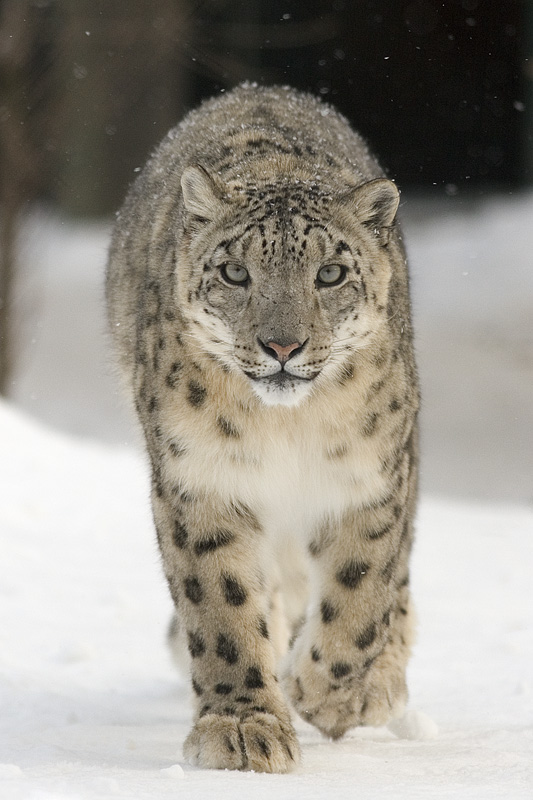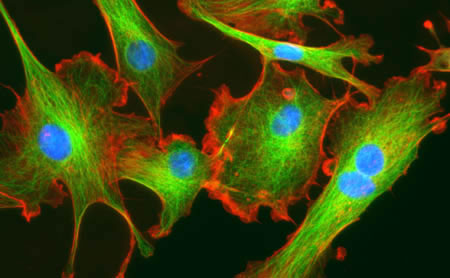Snow Leopard - Structural Hierarchy
Panthera Uncia
Zachari Ramos
Period 7

- Scientific Class
- Kingdom: Animalia
- Phylum: Chordata
- Class: Mammalia
- Order: Carnivora
- Family: Felidae
- Genus: Panthera
- Species: Uncia
- Size of adults
- Mature snow leopard can weigh up to 77-121 lbs.
- Male cats usually 30% larger than females.
- From head to rump, they measure 3 - 4.75 ft.
- Their tails are around 40 in. in length.
- Habitat
- They are usually located in mountains of Central Asia, in altitudes between 9800 and 17000 feet high.
- 60% of snow leopards live in China.
- Predators, prey
- Snow leopards don't usually have predators because they are top predators in their ecosystem.
- They typically have a diet of mainly sheep and goats, but sometimes eat rodents birds, and hares.
- Snow leopards are becoming endangered due to poachers in Central Asia. Poachers take advantage of their fur and use the cats' bones and body parts for Asian traditional medicine.
- Organ System
- Movement
- Snow leopards four legs are capable of moving quickly within short distances and known for jumping far distances. They depend on their incredibly long tail to keep balance.
- Respiration
- Their respiratory system relies on the diaphragm, which expands and contracts, to get oxygen into lungs and carbon dioxide out to the environment. The oxygen then goes into bloodstream, transporting it into its muscles and brain.
- Circulation
- Snow leopards have a double looped circulatory system, which contains one vessel transporting oxygenated blood and another vessel that transfers de-oxygenated blood.
- Excretion
- When food travels through the stomach, it breaks down and absorbs the nutrients. The waste is moved into the intestines to be excreted from the body.
- When snow leopards take in water, it travels to the kidneys, which dictate the amount of water in snow leopards. Any waste or extra water is transported to the bladder to be excreted.
- Nervous System
- The brain, spinal cord, and other nerves communicate and inform each other.
- Fun fact: Since snow leopards don't know how to walk properly when they are young, they will waddle instead.
- Major tissues within their legs
- Skeletal muscle tissues are attached to bones that help in movement.
- The ligaments and tendons are tissues that help connect not only the body but their legs together. They help combine joints together and help their legs function.
- Specific tissues within legs
- Bachiocephalicus helps extend the shoulder.
- Infraspinatus supports the shoulder joint.
- Triceps extends the elbow.
- Digital flexors and digital extensors control their toes.
- Fun fact: Snow leopards can use their powerful legs to leap as far as 50 feet.
- Cell
- Myocyte is a muscle cell involves the production of muscles. They are capable of contributing to various types of muscles.
- Fibroblasts cells that create connective tissue. They are responsible of making collagen and other fibers in connective tissue.
- Satellite cells are involved with snow leopards' skeletal muscle tissue that help regenerate and create their tissue.
- Fun fact: The follicles in the cats' whiskers are enclosed in muscle tissues that are used as a sensing device.
- Fibroblasts
- Connective tissue depend on fibroblasts to help connect different types of tissues. It produces different types of extracellular matrix, which results determining certain properties of connective tissues. Without it, muscle tissues would not be able to function because the tissues would be disconnected. They are most common type in connective tissue. They secrete collagen in order for connective tissue to maintain their structure. There are two different types of the cell, fibroblasts and fibrocyte. They are both the same cells, but fibroblasts is a more active cell compared to fibrocyte cells.
- Fun fact: Not only do fibroblasts produce extracellular matrix and collagen in animal tissues, they also specialize in repairing tissue. Their primary function is to produce fibers but when tissue is damaged, they are capable of healing.
Work Cited/Resources Section
http://www.defenders.org/snow-leopard/basic-facts
http://www.snowleopard.org/learn/cat-facts/threats-and-protections
http://snowleopardbiodiversityproject.weebly.com/characteristics.html
http://www.smh.com.au/environment/conservation/stem-cells-will-hopefully-change-a-leopards-knee-not-its-spots-20101119-180z7.html
https://prezi.com/cu6qsh9xkmqb/snow-leopards/
http://ghr.nlm.nih.gov/glossary=fibroblast
http://4h.wsu.edu/em2778cd/pdf/EM4289E.pdf
http://www.todayifoundout.com/index.php/2011/04/what-happens-if-a-cats-whiskers-are-damaged-or-clipped/
http://www.botany.uwc.ac.za/sci_ed/grade10/mammal/muscle.htm
http://snowleopardbiodiversityproject.weebly.com/characteristics.html
http://www.smh.com.au/environment/conservation/stem-cells-will-hopefully-change-a-leopards-knee-not-its-spots-20101119-180z7.html
https://prezi.com/cu6qsh9xkmqb/snow-leopards/
http://ghr.nlm.nih.gov/glossary=fibroblast
http://4h.wsu.edu/em2778cd/pdf/EM4289E.pdf
http://www.todayifoundout.com/index.php/2011/04/what-happens-if-a-cats-whiskers-are-damaged-or-clipped/
http://www.botany.uwc.ac.za/sci_ed/grade10/mammal/muscle.htm



